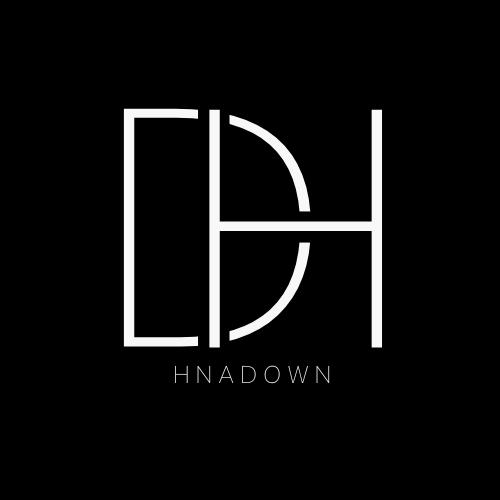A Pakistani wedding is a mesmerizing fusion of vibrant traditions, opulent celebrations, and breathtaking attire. At the heart of these unforgettable moments lies the Pakistani wedding dress – a masterpiece that encapsulates the rich cultural heritage, diversity, and exquisite craftsmanship of this South Asian nation. In this blog, we embark on a journey through the enchanting world of Pakistani wedding dresses, exploring their unique characteristics and the role they play in the celebration of love.
Diversity of Pakistani Wedding Dresses
Pakistani wedding dresses come in a splendid array of styles, colors, and fabrics, reflecting the diverse regions and cultures within Pakistan. From the regal ghararas and shararas of Punjab to the ornate lehengas of Sindh and the intricately embroidered saris of Balochistan, each region boasts its distinct bridal attire. It’s the celebration of this diversity that makes Pakistani wedding dresses so unique.
The Resplendent Lehenga
The lehenga, a quintessential choice for many Pakistani brides, is an embodiment of grandeur and elegance. This three-piece ensemble typically consists of a heavily embellished blouse, a flared skirt, and a flowing dupatta. The intricate embroidery, often done with zardozi, gota, or resham work, adds a touch of royalty to the attire. Brides adorn themselves in rich colors such as crimson red, deep maroon, or lush green, symbolizing love, passion, and new beginnings.
Traditional Embroidery Techniques
Pakistani wedding dresses are renowned for their exquisite handcrafted embroidery. The detailed craftsmanship, often done by skilled artisans, involves various techniques such as dabka, tilla, sequins, and mirror work. This delicate artistry not only enhances the beauty of the dress but also narrates stories of Pakistan’s culture and history.
Diverse Fabric Choices
Silk, chiffon, organza, and velvet are some of the favored fabric choices for Pakistani wedding dresses. These materials not only add opulence but also offer comfort to brides as they go through the extensive wedding rituals and ceremonies. The interplay of fabrics, embellishments, and colors results in an ensemble that’s visually stunning and comfortable to wear.
The Groom’s Attire
While Pakistani wedding dresses for brides are known for their grandeur, grooms are not left behind. The traditional attire for Pakistani grooms typically includes a sherwani, kurta, or a classic three-piece suit, adorned with intricate embroidery or embellishments. These outfits are designed to complement the bride’s dress, creating a harmonious and stunning pair.
Changing Trends
In recent years, Pakistani wedding dress trends have seen a fascinating transformation. While the classics remain timeless, contemporary brides are exploring pastel hues, unconventional silhouettes, and fusion ensembles. Designers are now infusing Western fashion elements into traditional Pakistani attire, giving rise to a new wave of bridal fashion.
Pakistani wedding dresses
Pakistani wedding dresses are a manifestation of rich cultural heritage, artistic craftsmanship, and centuries-old traditions. They play a pivotal role in one of the most significant events in a person’s life, a Pakistani wedding. Here’s a comprehensive overview of Pakistani wedding dresses:
Lehenga Choli:
A quintessential bridal attire, the lehenga choli consists of a heavily embroidered blouse (choli), a flared skirt (lehenga), and a flowing scarf (dupatta).
It’s characterized by intricate zardozi, gota patti, sequins, and thread work, often in vibrant hues like red, maroon, green, and gold.
Gharara and Sharara:
Traditionally popular in Northern regions of Pakistan, ghararas feature a heavily pleated skirt paired with a short, fitted blouse and a dupatta.
Shararas are wide-legged trousers paired with a matching kurta and dupatta.
Saree:
While not as commonly worn as lehengas, some Pakistani brides opt for the traditional sari, especially in regions like Sindh and Balochistan.
Saris are draped elegantly and often heavily embellished with intricate work.
Anarkali Suit:
Anarkali suits are floor-length, flared outfits, named after the legendary Mughal courtesan Anarkali. They feature ornate embroidery and fine detailing.
Peshwas:
This is a long, flared dress paired with a churidar (fitted trousers) and a dupatta. It’s characterized by its royal and regal appearance.
Farshi Pajama:
This is a variation of the gharara where the pants have a wide, flared silhouette, giving them a distinctive look.
Traditional Embroidery Techniques:
Pakistani wedding dresses are known for their exquisite hand-embroidery, which includes techniques like zardozi (metallic threadwork), dabka (intricate threadwork), and gota (ribbon work).
Choice of Fabrics:
Bridal ensembles are crafted from opulent fabrics like silk, chiffon, velvet, and organza. These fabrics not only enhance the regal appearance but also ensure comfort.
Jewelry and Accessories:
Pakistani brides accessorize their dresses with intricate jewelry, including maang tikka, jhoomar (headpieces), necklaces, bangles, and earrings. These accessories complement and enhance the overall bridal look.
Groom’s Attire:
The groom typically wears a sherwani, kurta, or a three-piece suit, often adorned with similar intricate embroidery and embellishments. The color and design are coordinated with the bride’s attire.
Incorporating Modern Trends:
Contemporary brides are increasingly experimenting with pastel shades, unconventional silhouettes, and fusion ensembles, adding a modern twist to traditional attire.
Regional Influences:
Different regions in Pakistan have their own unique bridal styles and preferences. For example, Punjabi brides often choose vibrant and heavily embellished outfits, while Sindhi brides may opt for bright colors and mirror work.
In conclusion, Pakistani wedding dresses are a testament to the country’s rich cultural tapestry and artistry. They embody the essence of love, celebration, and tradition, making each bridal ensemble a work of art and a cherished heirloom.
Conclusion
Pakistani wedding dresses are more than just garments; they are pieces of art, rich in culture, tradition, and craftsmanship. They encapsulate the essence of a beautiful love story and the grand celebration that is a Pakistani wedding. These dresses not only make brides feel like queens but also serve as a connection to the roots of a diverse and culturally vibrant nation.
So, whether you’re a bride-to-be or simply an admirer of the beauty in culture and clothing, the world of Pakistani wedding dresses will never cease to enchant and amaze with its timeless elegance and ever-evolving trends.
